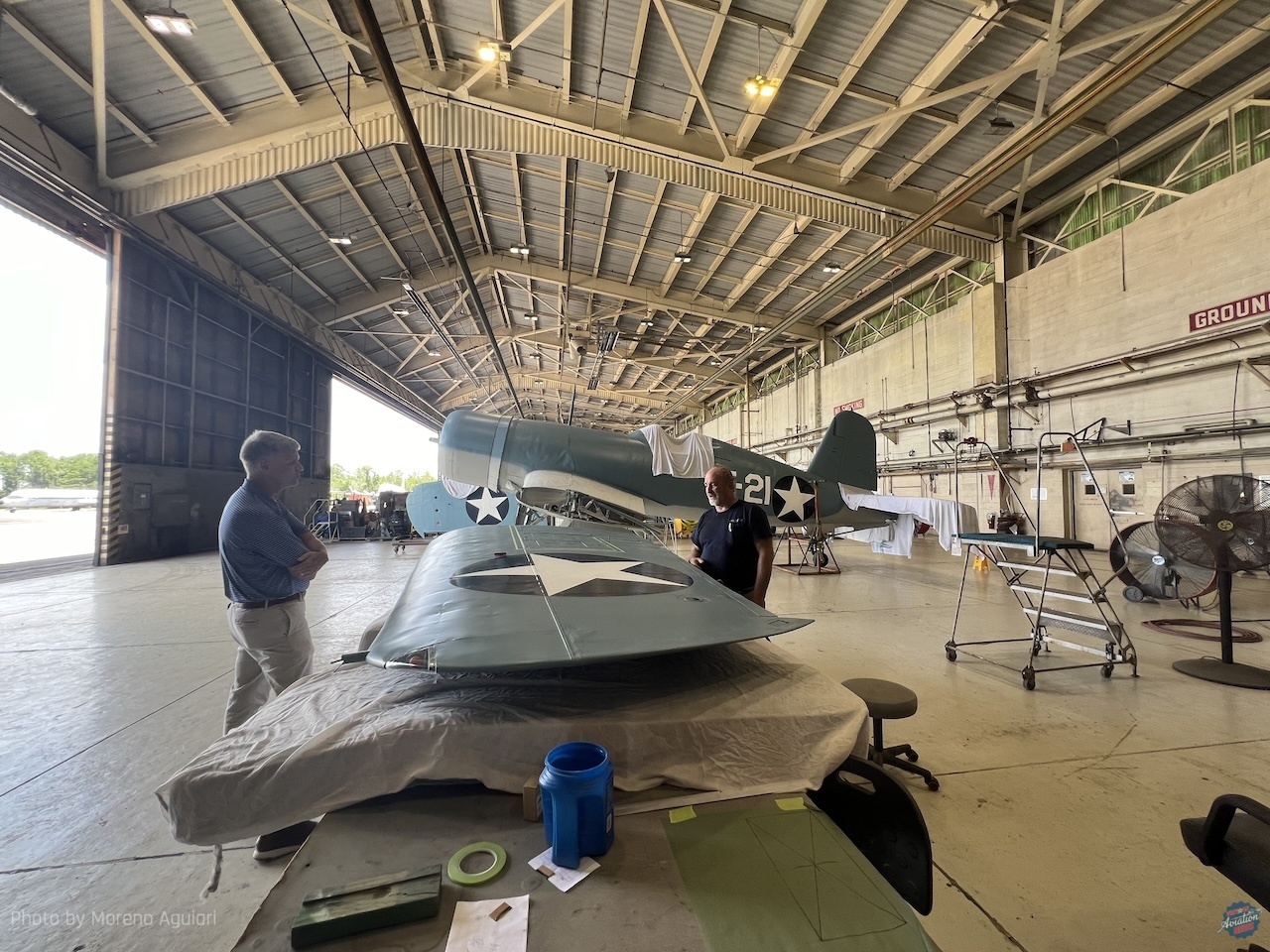The National Naval Aviation Museum has recently completed the restoration of a rare “birdcage” Corsair, a process that took 14 years to finish. Bureau Number (BuNo) 02465 has now been relocated to the museum’s World War II section in the West Wing. As announced by Deputy Director Hill Goodspeed in a June interview, this iconic aircraft will soon be suspended from the ceiling for public display.

The term “Birdcage” refers to early models of the Corsair fighter aircraft, distinguished by the intricate framework of their canopy, which resembled a birdcage. This design limited the pilot’s visibility, prompting later versions to adopt a more streamlined, blown canopy to improve situational awareness.
BuNo 02465 is among the oldest surviving Corsairs, with a fascinating history. Manufactured at Vought’s Stratford, Connecticut facility, it was the 312th airframe produced and was accepted by the U.S. Navy on March 29, 1943. Assigned to the Carrier Qualification Training Unit (CQTU) at Naval Air Station Glenview in Illinois, the aircraft was used to train pilots for carrier landings on the converted paddlewheel steamships USS Wolverine and USS Sable.

On June 12, 1943, Ensign Carl Harold Johnson took off from Glenview in 02465 for his carrier qualification aboard the USS Wolverine. With just 388.5 flight hours, including 57 hours in Corsairs, Johnson approached the carrier for landing. Due to limited visibility from the Corsair’s nose and wings, Johnson missed the landing signal and attempted to wave off. However, his wheels had already touched down, causing his arresting hook to snag the wire, which ultimately snapped. The aircraft plunged off the side of the deck into Lake Michigan. Fortunately, Johnson was quickly rescued with minor injuries, but the Corsair sank into the lake, seemingly lost forever.

In the 1980s, A&T Recovery, led by Allan Olson and Taras Lyssenko, began collaborating with the Naval History and Heritage Command and the museum to recover World War II aircraft from Lake Michigan. In 1995, they discovered BuNo 02465 using side-scan sonar. Pilot and aircraft restorer Chuck Greenhill funded the recovery of the Corsair during the 2000s.

Over the last 14 years, volunteers meticulously restored the aircraft, including repainting it in its original 1943 colors: Non-specular Medium Blue Gray and Light Gray. The Corsair will soon join two other restored Corsairs, an FG-1D BuNo 92246 and an F4U-4 BuNo 97349, in the museum.
In addition to BuNo 02465, two other Birdcage Corsairs are undergoing restoration. BuNo 02270, which crashed off Efate Island (Vanuatu) in 1944, is being restored to airworthy condition at the Classic Jets Fighter Museum in Australia. Meanwhile, BuNo 02449, recovered from Espiritu Santo (Vanuatu), is being restored to flying condition at Vulture’s Row Aviation in California. The restoration of BuNo 02465 serves as a tribute to naval aviators like Ensign Carl H. Johnson, who gave their lives during World War II. The museum recently unveiled the Corsair with a formal rollout, and its next step will be securing the aircraft to the ceiling for visitors to admire.
































